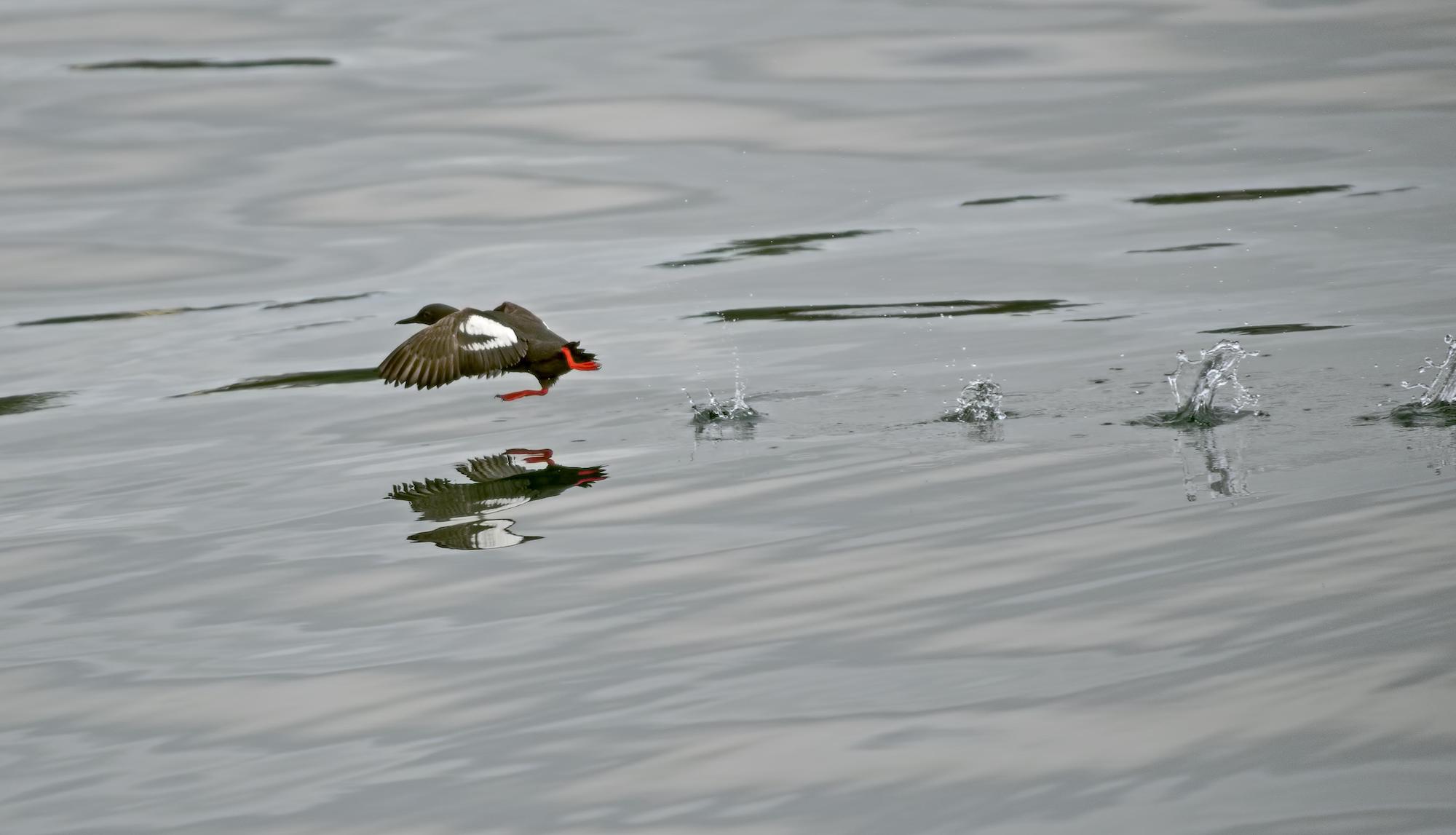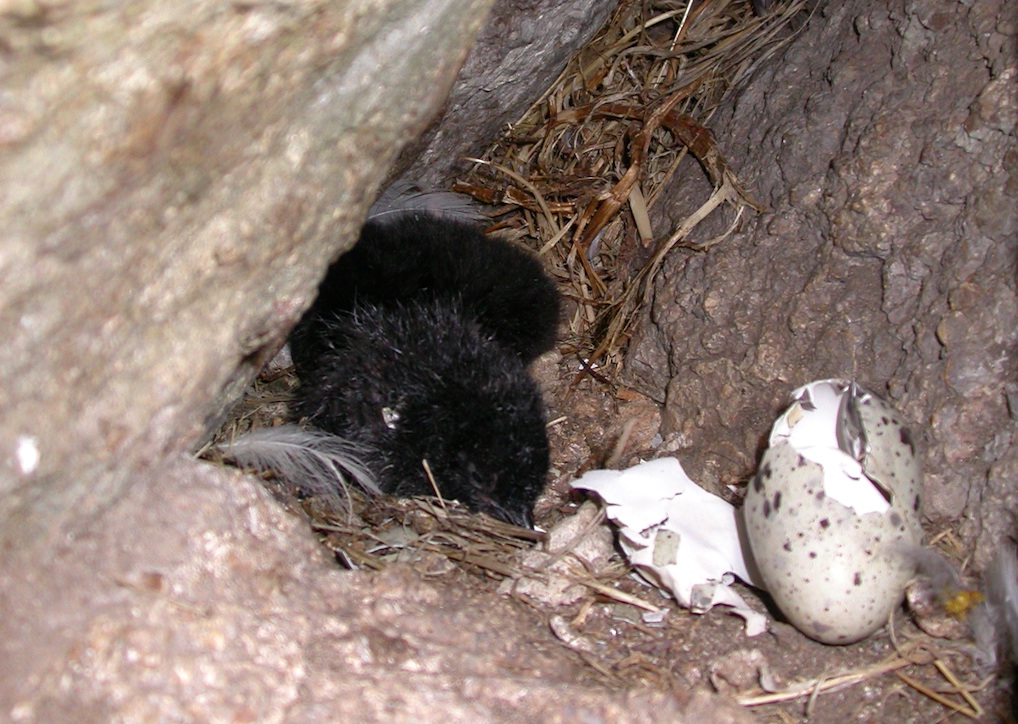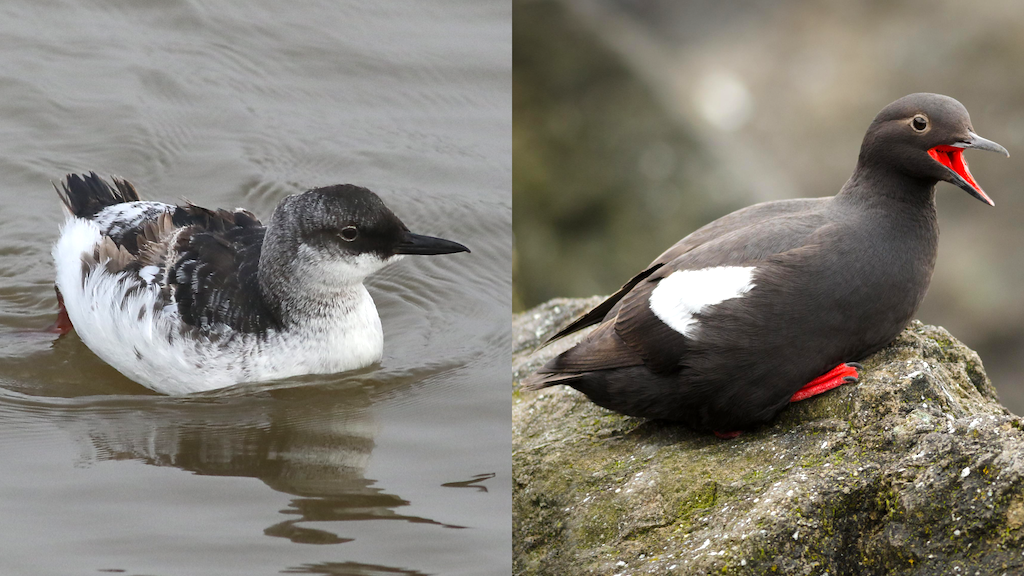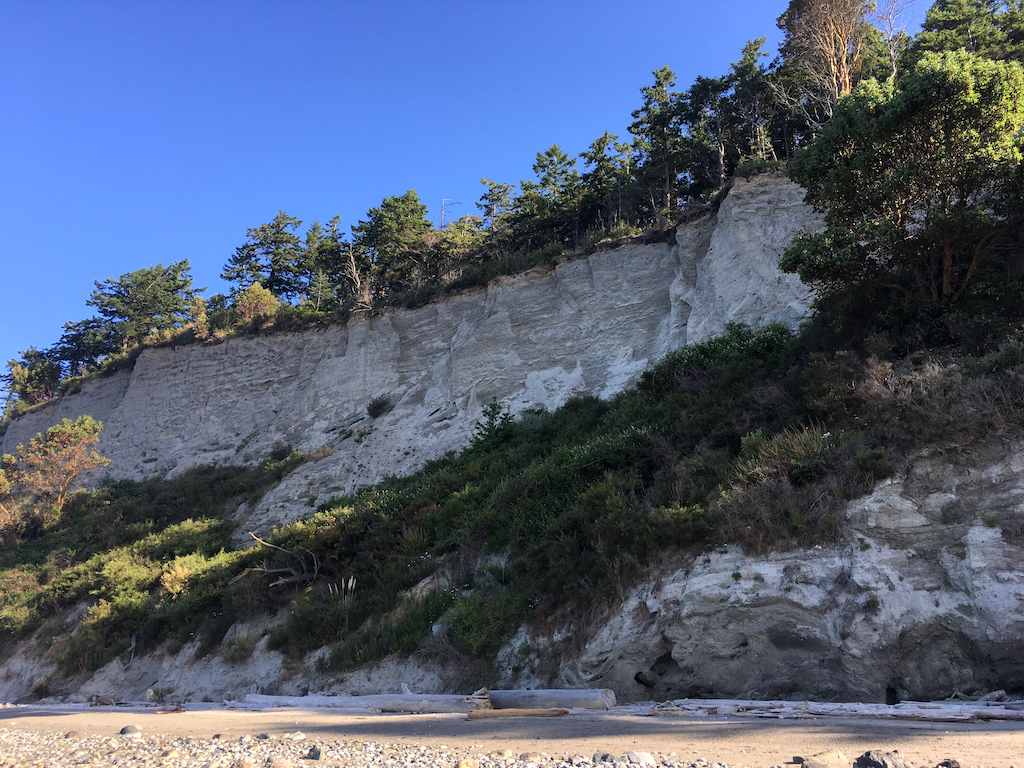One day in 2001, a reader got in touch and invited her to come to some bluffs to see the guillemots there. Wood had been volunteering with the Puget Sound Breeding Bird Atlas since the mid-1990s, so she knew what guillemots were even if she had not thought about them much. But that summer day, the woman took her to stand under the colony cliffs while dozens of adults busily attended to their chicks. “Guillemots were everywhere, flying in and out, swirling around,” Wood remembers. “It was just magical.”
From her work with the breeding bird survey, Wood also knew no one was paying attention to the guillemots beyond the occasional count. Soon after, at an Audubon meeting, she stood up and asked if anyone would be interested in going out to look for guillemot colonies. One woman raised her hand — Phyllis Kind, a retired microbiologist who had been a professor at George Washington University. (“I once went and counted the number of Ph.D.s among our volunteers,” Wood says. “It was a lot.”)
Wood and Kind kayaked all around Whidbey Island, noting guillemot colonies. They decided to enlist volunteers to monitor the colonies during the summer. With some help from area seabird biologists, they developed a protocol for what such watches would entail, so that the effort might reveal whether guillemots were successfully raising chicks, and with what food adults were provisioning them. “They were so helpful,” Wood says. “And it was neat to know they valued what we could do.”
Making use of the data
These days, Wood has between sixty and seventy volunteers each year monitoring about one thousand guillemots at some twenty-five colonies spread all around Whidbey. (The Guillemot Research Group has recently expanded to four other sites, from South Sound to Clallam County.) Her requests of the volunteers’ time are modest — they are to spend one hour per week watching a colony for ten weeks. During that hour, they are asked to, as Wood says, “act like a piece of driftwood” so as not to disturb the guillemots. They also count the number of times guillemots fly to or exit from a burrow, and if possible identify the species of whatever prey the guillemot might be carrying. Should something disturb the guillemots — an eagle, a dog-walker — they note that, too, and the length of the disturbance.
It might not sound like much, but a lot can happen even in an hour that can shed light on guillemot distribution and abundance, and foraging effort. The project is now more than a decade old, and the data was starting to pile up, reams and reams of it, until, a couple of years ago, Wood thought someone should make use of it. The scientific community had helped her before; here was her chance to return the favor, if they wanted.
When Sarah Converse, a quantitative ecologist at the University of Washington, approached Wood to see if she could use the data, Wood said yes. To ground truth her analysis, Converse came out to see the colonies with Wood. It turned out to be one of those magical days: Guillemots everywhere doing interesting things, flying around, making lots of noise, seemingly untroubled by the presence of a couple of elated humans. “Sarah just got such a kick out of them,” Wood says. “She said it was the first citizen science project she felt she could use.”
Converse entrusted the analysis of Wood’s data to her Ph.D. student, Amanda Warlick. “What Frances is doing is really incredible,” Warlick says. “Without that kind of effort, these rigorous analyses wouldn’t be possible because the data wouldn’t exist.” More typically, she notes, citizen science projects are begun under the watchful eye of the scientists who will analyze the data, but that is not the case here. Guillemots present special challenges as well: they are not banded, no one can see inside their nests and their chicks fledge at night. “We’ve had to come up with some statistical work-arounds,” Warlick says.
Ultimately, Warlick wants to look for correlations between the guillemot’s population numbers and reproductive success and marine conditions, such as coastal upwelling or sea surface temperature. The challenge, she says, is that since pigeon guillemots are so cosmopolitan, and much more willing than other marine birds to nest in the vicinity of, say, a housing development, or near people who regularly walk their dogs, declines she detects could be due to any number of reasons. “They’re urban birds, so we can’t restrict our range of potential influences,” Warlick says. “We have to be thoughtful to the fact that what we really should be doing is paying attention to everything.”
Keeping an eye out
Wood and I walk the shore of Mutiny Bay for a little longer and then head to another colony just up the beach called Mutiny Sands, but the guillemots are quiet there, too. Wood is a little fretful on my behalf, but she need not be — it is nice to walk the beach, to see what birds there are, to watch them go about their business however discreetly.
“Yes, that’s one of the appeals, just being outside,” Wood says. “But you should come back in July. Then it will really be hopping — I promise.”
I tell her I will, and we say our farewells so I can catch the ferry back to the mainland at Clinton. “Oh, you should keep an eye out for guillemots,” Wood says. “They burrow right under the ferry dock.”
I get to the dock and take my place in the columns of cars. Having watched a ferry just depart, I have time to walk down to the small public beach nearby. A family is digging in the sand, a couple of people are walking a large happy dog. But out on the water, perhaps fifty yards from shore, a single guillemot is bobbing along with the ferry’s lingering chop. It makes no noise, and from where I am it is impossible to see anything more than its stubby black profile. Then a guillemot flies out from under the long ferry pier, where it must have been perched. It splashes down right next to the first guillemot, and the two mildly joust with their bills, whether in affection or competition it is difficult to say.
A couple of seconds later, two more guillemots fly out from under the pier to join the first pair, and seconds after them, two more. The six guillemots gather together in a little group. Even from this distance, even with everything else going on — the cars and trucks grumbling to their places, the children laughing in the surf, the dog barking at something — I soon can make out another set of sounds: the te-te-te-teeteeteeteetees and sweeeeeeeees and ziiiiiiiings of gabby guillemots, before two of them lift off suddenly to chase each other around.





